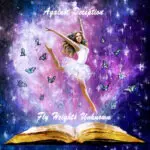Music, Economics, and Beyond

In Music Economics and Beyond, you will learn about alternative revenue streams for musicians and labels, and lessons for artists and producers of music. Music, Economics, and Beyond This article will explore alternative revenue streams for musicians and labels, including recording sales and tour profits. While there are numerous examples of music that has been monetized through online music sales, you should also consider the following:
Lessons for music makers and music deliverers
Consumers will choose a delivery model based on a bundle of values. These values include quality, quantity, time-cost effectiveness, and content. In addition to the quality of the deliverable, consumer preferences include legal services, intellectual property, and education. The following lessons are meant to help musicians and other music makers choose the best delivery method for their needs. Read on to learn more about the different modes of music delivery.
Alternative revenue streams for artists and labels
One way to increase your income is to sell merchandise. Many record labels sell concert tour memorabilia as a way to promote their artists. These items are highly desirable and often create a lot of nostalgia, which can be an excellent alternative revenue stream for artists and labels. There are many other ways to make money with music. Here are a few examples. One way to earn money from music is to perform sessions for recording studios.
Subscription music services are another alternative income stream for artists and labels. Subscription music services are similar to crowdfunding platforms, where fans pay a monthly fee to access exclusive content such as private live streams, behind-the-scenes content, and even personal phone calls with the artist. These types of subscription services are an excellent source of revenue for independent artists and labels, as they can provide a steady stream of income. But these subscription models aren’t for everyone.
In the music industry, ticket sales are one of the most common ways to make money. While the vast majority of ticket sales will ultimately go to the artist, record labels should aim to plan on 75 percent to 90% of the final profit. The remainder will go to the record label or promoter. Similarly, booking a tour doesn’t produce an immediate profit, but it will generate additional income through other sources. The key to maximizing your earnings is to diversify your income streams.
Another alternative revenue stream for artists and labels is the sale of merchandise. Labels will usually take a percentage of the profits from sales of merchandise, including CDs, DVDs, and merch. However, artists must promote their shows well so that they can increase their exposure and reach their target audience. The label will also make money through ticket sales and merchandise sales, so it’s important to promote the event well.
Record sales
The growth of streaming services and paid subscription services have pushed up recorded music revenue, but how much has the industry changed? In 2017, the RIAA reported that paid subscription services accounted for 12% of the recorded music market, compared to 7% in 2007. And while CD sales peaked in 2002 at 95.5%, they fell to just 22% last year. LPs and cassette tapes still account for a majority of sales, though their share has been slipping.
The global recorded music industry has remained profitable despite decreasing sales, thanks in part to the growing popularity of mobile devices. Increasing sales of ringtones have led artists to turn to alternative sources of income, such as merchandise, endorsements, and touring. As a result, record labels have recognized the importance of these alternate revenue streams, and demand 360-degree deals from their artists. Today, ringtones are the second most popular form of revenue for artists.
In the pre-Internet era, recorded music represented the largest segment of the music industry and generated the highest revenues. For most aspiring artists, signing a record label contract provided the funding they needed to complete their first recording and enter the global music distribution system. The industry’s other segments, like music licensing and music publishing, were less glamorous and largely business-to-business, without much interaction with the audience. However, in the digital age, music licensing has changed that picture, as artists have embraced streaming and other services.
In the past two decades, the global recorded music industry has made a surprising comeback. The industry’s revenue peaked at almost $21 billion in 1999, and vinyl sales reached a record high. By 1999, the market share of the vinyl record was up to 6%. Record sales have been largely flat since 2010 and increased by just 0.89% last year. Overall, sales of recorded music have now returned to pre-piracy levels.
Touring profits
The music industry doesn’t pay the songwriters enough for touring profits. Most tour managers and agents take a flat percentage of the profit. The result is that the promoter ends up with less than EUR150,000, while the booking agent is left with nothing. This situation reflects the lack of transparency in the music industry. To address this problem, the music industry has developed a software platform called Tour Simulator.
In the North American market, the revenue distribution is fairly fair. Half of the ticket price goes to the venue and ticketing company, while the other half is paid to the artist. So, a typical middle-class touring band will get a profit of around $20 per show. However, this figure isn’t the total revenue of a touring band. The ticket charge includes the artist’s net profit and the fee paid to the ticketing agency.
The study surveyed 40 respondents who hold various positions in the music industry. They range from musicians to technicians to music executives and managers. Most are based in North America. Milton, a senior vice-president of a major record label, is one of the respondents who represents himself in business. Half of the respondents are not musicians but are instead non-musicians, such as truck drivers. Two of the respondents work primarily as musicians and technicians.
While the physical demands of touring a musician’s daily life can be challenging, they also need to perform. Moreover, their lives are patterned around performance schedules, transportation times, and economic logic. The planning and execution of a tour is a delicate balance between profitability, availability, and physical limitations. As with dressage, musicians must reconcile the business case and their physical limits. Using a tour hack to avoid these problems is an essential part of the music industry.






Comments
This post currently has no comments.